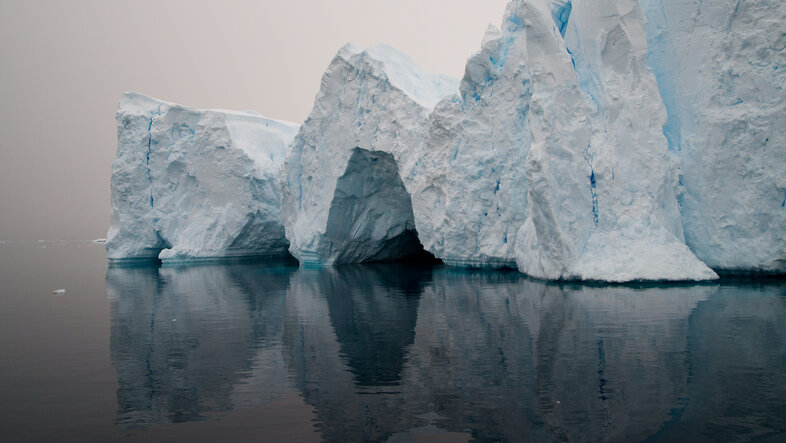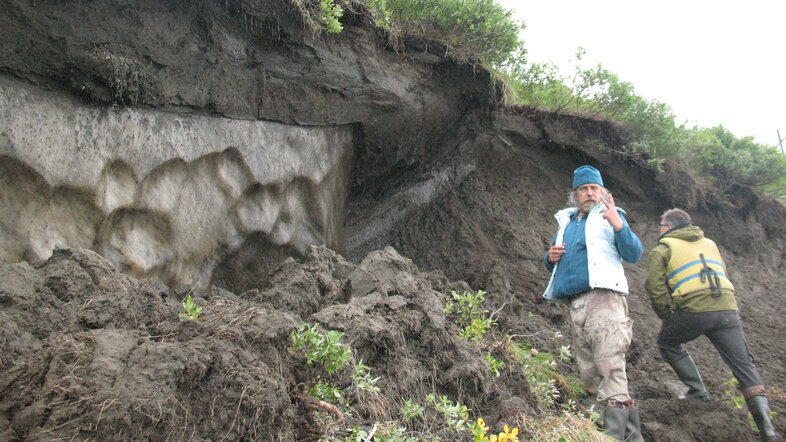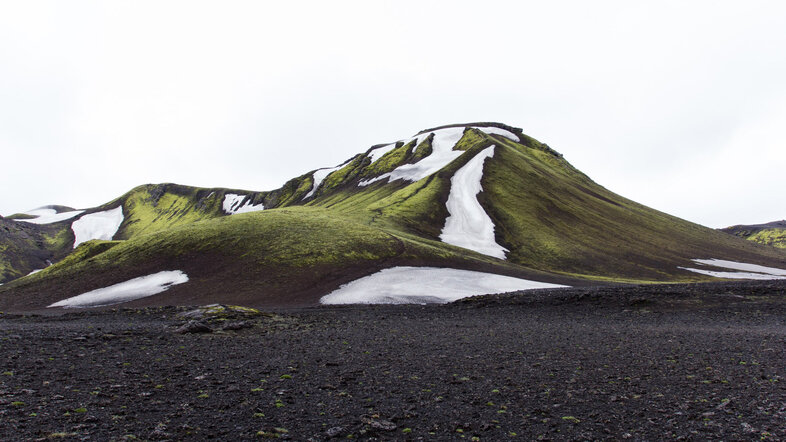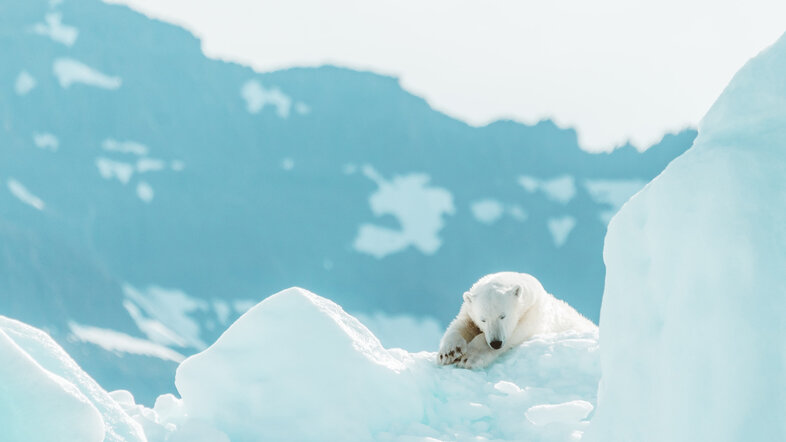"What we are doing right now is completely irresponsible"
Rudolphina: Andreas Richter, how do we humans affect the Arctic?
Andreas Richter: Anyone who deals with this region will quickly understand that even in the most remote areas of the world, people are interfering in nature, for example by extracting oil, natural gas or mineral resources, which sometimes causes enormous environmental damage. These direct interventions are regional and selective. But also indirect interventions have a huge impact. I am most amazed by the fact that heavy metals, such as mercury, are found in permafrost soils (note: permanently frozen soil) to a surprisingly large extent And not just there. Pollutants and pesticides, which are produced elsewhere in the world, arrive in the polar regions via atmospheric air currents, are deposited there and accumulate in the food chain. For example, the polar bear, which is at the very top of the food chain, accumulates these pesticides in its fatty tissue. Yes, you can even find them there and in considerate numbers. But I would say that the most striking thing is how climate change is changing these regions.
Rudolphina: Because of the warmer climate causing permafrost soils to thaw and thus, releasing large amounts of carbon?
Andreas Richter:
The most noticeable visual changes are those by thawing ice wedges and ice lenses. In the polar regions, the soils are not only made of frozen soil, but there are also large quantities of frozen water, which often form wedges that extend downwards up to several meters. When these ice wedges thaw, the ground might sag, and the whole terrain seems to cave in. Then, under certain circumstances, several thousand square meters of mud pools emerge.
However, the release of carbon per se is not visible, of course. What we see is Arctic greening: While the tree line in the Alps moves to higher altitudes, it is moving north in the Arctic. And bush encroachment is increasing in the treeless tundra. Nevertheless, the invisible consequences are more severe, such as the depletion of huge amounts of carbon from the soil.
Rudolphina: And in your research, you are most interested in this potential release of carbon because it contributes so much to global warming? I was surprised by a study that you published a few years ago, which gave a rather optimistic outlook. It was about self-regulating systems in soils heated by geothermal energy. Can you tell us more about it?
Andreas Richter:
Back then, we looked at the effects of warming on the carbon in the soil in Iceland. First of all, microorganisms in the soil work faster due to the heat and decompose the carbon more quickly – just as is the case with the thawing of permafrost soils in the wake of climate change. The exciting result of the study was that the system had regulated itself independently again only a few years after the warming had begun.
This can be explained as follows: If a lot of carbon is lost in a short time, the food available to the microorganisms decreases and their population also reduces. This in turn means that less carbon can be decomposed, and thus less CO2 (almost as much as before the warming) is released to the atmosphere. But! We must not forget that 40 per cent of the carbon is lost from the upper soil layers. Therefore, the outlook is certainly not optimistic. It would be a huge problem even if "only" 40 per cent of the carbon from the entire Arctic area were released to the atmosphere.
Rudolphina: So we definitely cannot rely on this effect of self-regulation…
Andreas Richter: We do not know if this effect also occurs in the permafrost soils in the Arctic. The polar regions away from the research stations are generally underexplored. The thawing of such an ice wedge is an abrupt process that leads to a sudden change in carbon storage. If this happens on a large scale, it can lead to abrupt climate change. When the ice wedges thaw, suddenly everything is underwater, as these soils are often poorly drained. In other words, the microorganisms do no longer have oxygen to decompose carbon. This results in less CO2 and more methane, a significantly more potent greenhouse gas. We do not yet know exactly how much ice permafrost soils actually contain. So, we cannot extrapolate this process to the entire Arctic. The only thing we really know is that sudden changes are much more threatening than a slow warming process, which we can reasonably calculate.
Rudolphina: This process is one of the so-called feedback processes? If it is getting warmer, this stimulates new processes that will increase the warming until we reach certain thresholds and can no longer reverse anything?
Andreas Richter: This is one of the really big dangers: If we exceed certain tipping points with global warming, this may cause strong, irreversible feedback effects. Then, a lot of permafrost carbon is released, which leads to an unknown future of the climate system. Various studies confirm this. What are such tipping points in the climate system? The Gulf Stream, for example, which could weaken or come to a standstill. Drought or further excessive deforestation in the Amazon Basin, so that the rainforest collapses – which turns into a savannah then. Logically, all of this would have very serious consequences for the global climate.
Rudolphina: What actions could policy-makers take based on your research?
Andreas Richter: What policy is doing at the moment is to work precisely toward a point that we scientists cannot specify exactly. For example, the "2-degree Celsius target". Nobody takes actions beyond the absolutely necessary. They go as far as they can as long as it is still justifiable. And this is what makes the situation so dangerous. We still do not know much about the feedback effects and cannot predict the tipping points exactly. So, we should not push our luck. The risk that it might turn out differently is far too great. The only recommendation for action I can give is the following: We have to decarbonise our society immediately and consistently, regardless of whether we can determine the exact point or not. This is the only thing that we can do. Everything else is just negligent. We can compare the dilemma to the situation caused by the coronavirus: Policy-makers only take actions when the intensive care units are already beyond their capacities. But it is actually necessary to take countermeasures at least two or three weeks before there are indications that they will be full. The people who are now in intensive care units have actually been infected several weeks ago. The situation of climate change is similar. We still believe that we can release a certain amount of carbon into the atmosphere, and still keep global warming below two degrees. I say: This is nonsense, because we can only predict with a certain probability how much CO2 emissions will lead to a certain level of warming. In addition, a warming of two degrees can already start processes that cause feedback effects we cannot stop any more. What we are doing is irresponsible, in my opinion.
Rudolphina: Suppose we cannot stop global warming. What happens to the Earth then?
Andreas Richter: In the next few decades, it will probably get warmer than ever before on Earth in the last millions of years. And the actual danger is that we destabilise this system from the relatively stable change between ice ages and greenhouse periods to another system, a system we can call Hothouse Earth. Once we have reached this point, we will not be able to get back to today’s climate system. This change would be irreversible. In this hothouse, humans would no longer be able to use large areas of the world. There would be a global south, which can partly no longer be inhabited. Sea levels would be significantly higher, affecting billions of people living in coastal areas. And, of course, the climate would be completely different. Global warming of several degrees will not be the end of the Earth, nor will it be the end of people, but it will be the end of civilisation as we know it. This is why it is so important to really stay far away from possible tipping points. As a scientist, I cannot understand at all how society is willing to take such a risk. Because we have alternatives. And they would not throw us back into the Stone Age. No one has to live without energy, we just have to produce it differently.
Rudolphina: Thank you very much for this informative interview. (ak)



